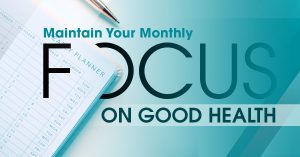This is the 2nd installment in a series by Staff Writer, Chad Morris.
We’re in the thick of a stress epidemic. While we can’t control external stressors like global politics and the economy, we’re not totally helpless. It’s now more important than ever to practice self-care, so we’re equipped to handle any stress life has in store for us. To do that, we need to first get in control of our thoughts… That’s no easy feat.
Have you ever meditated? You may be thinking, “No, and ‘ohm’, not looking for spiritual enlightenment,” assuming you think in puns as often as I do. As an eternal skeptic, I get it. I was hesitant to try meditation because I wanted a practical solution to slow down my Energizer Bunny brain, not a spiritual one.
I gave it a second chance after discovering a subculture of top performers—Warren Buffet, Kobe Bryant, Steve Jobs, Hugh Jackman, and Oprah Winfrey—who practice for the measurable impact meditation has on brain function. These were highly successful people who meditated to build productive, stress-resilient brains. Now that I could get on board with.
There’s a lot of research in neuroscience on how meditation can slow the aging process in your brain, decrease your blood pressure, and improve your pain tolerance and attention span. But for this purpose, let’s focus specifically on meditation and stress.
There are two important areas of the brain on which to focus. The prefrontal cortex—which shrinks in response to stress—regulates your emotions, empathy, and impulse control. Meanwhile, the amygdala is the primal fight-or-flight region of the brain that pumps you full of anxiety, fear, and stress.
According to research published in the Journal of Brain and Cognition, after meditating daily for eight weeks, participants had a marked increase in thickness in the prefrontal cortex, as well as a decrease in the amygdala. In short, their brains were better suited for stress.
Knowing that, could you spare a few minutes to try meditation? Here’s how you get started:
- Find a quiet place, close your eyes, and sit comfortably upright. I like to meditate each day after eating lunch to get back to work in a clear head space. Anchoring meditation to another habit helps normalize it in your routine.
- Focus on your breath and all the sensations as you inhale and exhale through your nose. Feel your belly rise and fall and notice how each breath is different than the last.
- Try to stay present in the moment. You’re inevitably going to have thoughts. Don’t try to fight it or suppress them. Imagine your thoughts as passing clouds and allow them to drift in and out of focus. Don’t get frustrated if you get completely immersed in a thought. Simply recognize the distraction and return focus to your breath.
- Label recurring thoughts. I like to label the emotion associated with the thought (fear, guilt, excitement) and whether it’s negative, neutral, or positive. Doing this builds awareness of your thought patterns and helps resolve your thoughts without directly engaging them.
- Set a time. I use the free app Insight Timer to time my sessions. You may want to meditate for just a couple minutes each day and gradually increase it over time, exercising your new habit as you would do with your muscles. Ten minutes is the sweet spot for me. Once your timer goes off, gradually open your eyes and sit for another minute. Notice how your body and mind feel. I find doing this helps me transition from meditation to being mindful in my day.
It can be difficult at first and you probably won’t see effects in just one session but be patient. Over time, that little voice in your head gets calmer, more observant, and less emotionally reactive. The time I spend meditating is one of the few times I really feel off the clock each day. It’s “me time” and I absolutely love it.
Read Part 3
The statements made in this article have not been evaluated by Health Canada or the U.S. Food and Drug Administration. None of the information presented is intended to diagnose, treat, cure or prevent disease. This is a personal account and individual experiences may vary. Always seek the advice of your physician or other qualified health provider with any questions you may have regarding a medical condition.



